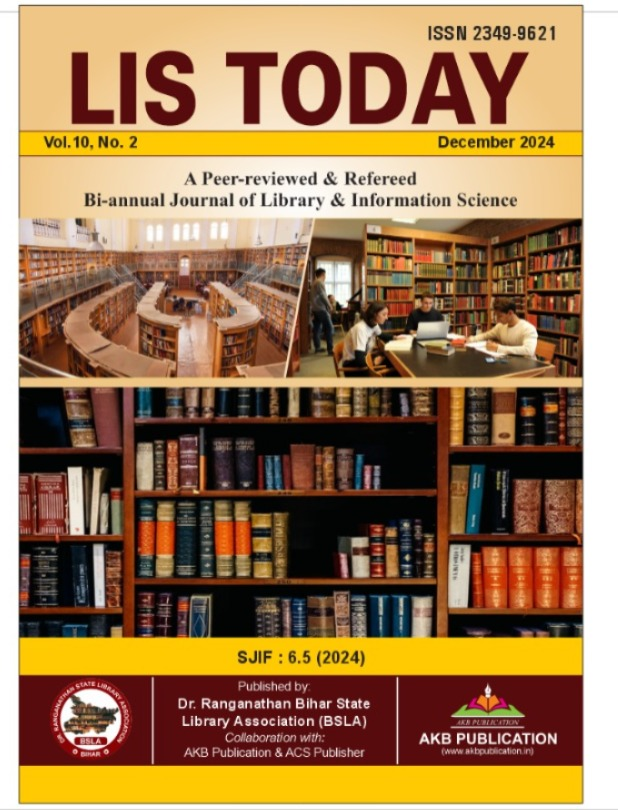Science Mapping of Open-Access Articles on Data Visualisation: A Scopus-based Analysis
DOI:
https://doi.org/10.48165/lt.2024.10.1Keywords:
Data Visualization, Open Access, Science Mapping, Scopus Database, Publishing TrendsAbstract
The prime objective of the present study is to analyze the impact of open-access publishing on research publications in data visualization journal research papers using scientometric indicators and science mapping techniques. A total of 9,018 publication records were extracted from the Scopus database for five years, from 2018 to 2022. The parameters used for the present study are open-access publication trends and their impact on the number of publications and citations, most prolific authors, organizations, countries, journals, etc. The study results indicate that 60.55% of articles on data visualization were published as open access, and the trend of open-access publication has grown exponentially. The study further found that open-access articles have a better academic impact than overall articles published. Huamin Qu of Hong Kong University of Science and Technology has contributed the highest number (22) of open-access articles on data visualization; the authors affiliated with the Centre National de la Recherche Scientifique (CNRS), Paris, have contributed the highest (116) OA articles; and the United States was the topmost productive country with the highest (1,809) OA articles. IEEE Transactions on Visualization and Computer Graphics was the most preferred journal among researchers on data visualization to publish their research as open-access articles.
References
HHarnad, S., & Brody, T. (2004). Comparing the impact of open access (OA) vs. non-OA articles in the same jour nals. *D-Lib Magazine, 10*(6). https://doi.org/10.1045/ june2004-harnad
Holmberg, K. (2019). Do articles in open access journals have more frequent altmetric activity than articles in subscrip tion-based journals? An investigation of the research output of Finnish universities. *SpringerLink*. https:// link.springer.com/article/10.1007/s11192-019-03301-x?er ror=cookies_not_supported&code=e50092aa-0406-499a 89d5-ad32352d443e
IBM. (2024). What is data visualisation? https://www.ibm.com/ topics/data-visualization
Kousha, K., & Abdoli, M. (2010). The citation impact of open access agricultural research. *Online Information Review, 34*(5), 772–785. https://doi.org/10.1108/14684521011084618
Netquest. (2021). *Visualise it!: A comprehensive guide to data visualization*. https://www.netquest.com/hubfs/docs/ ebook-data-visualization-EN.pdf
Shettar, I. M., & Hadagali, G. S. (2021). Impact of open access publication in veterinary sciences in India: A scientometric
study. In K. N. Kandapal et al. (Eds.), *Libraries: From clay tablet to fablet* (pp. 144–157). Agri-Biovet Press. Shettar, I. M. (2022). Increased citations through open access publishing or international collaboration: A study of engineering publications. In B. Ramesh Babu et al. (Eds.), *6th I-LISS International Conference on revital ising the libraries to the Android society* (pp. 708-715). BS Publications.
Singh, K., Ranjan, A., & Rai, S. (2019). Information visualisation research publications during 1990-2018: A scientometric analysis. *Library Philosophy and Practice (E-journal)*. https://digitalcommons.unl.edu/cgi/viewcontent.cgi?arti
cle=7117
Wang, X., Liu, C., Mao, W., & Fang, Z. (2015). The open access advantage considering citation, article usage, and social media attention. *Scientometrics, 103*(2), 555–564. https:// doi.org/10.1007/s11192-015-1547-0

